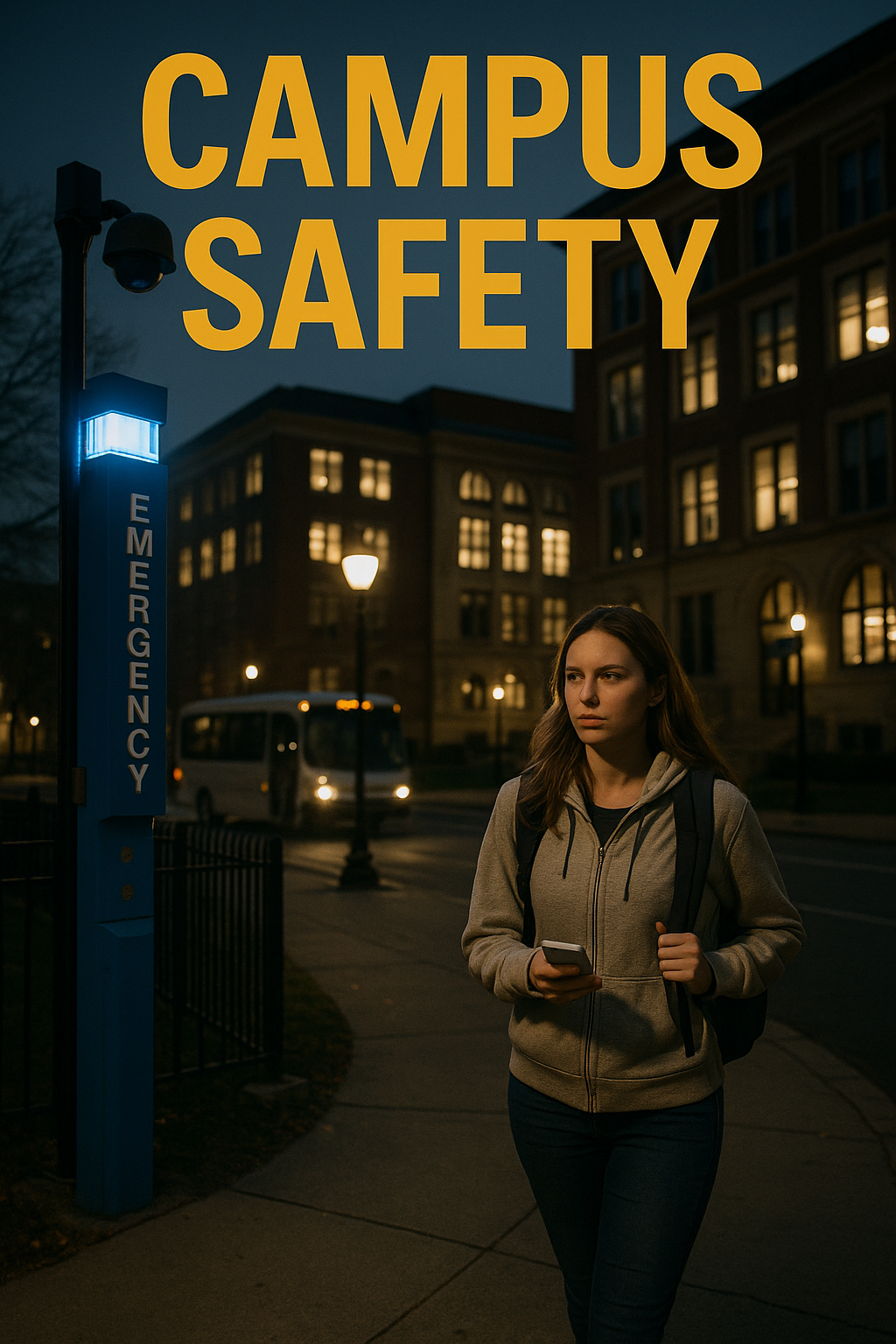Episode Transcript
[00:00:00] Speaker A: You know, that moment you slide your card into an ATM feels totally automatic, Right?
[00:00:03] Speaker B: Just normal, everyday thing.
[00:00:05] Speaker A: But what if that exact moment, that ordinary action is where you're actually most vulnerable?
Look, we're not trying to make anyone paranoid here.
[00:00:13] Speaker B: No, not at all.
[00:00:14] Speaker A: But we are going to do a tactical deep dive into ATM safety today. We've pulled together some great material and the idea is really to sharpen your awareness, give you some solid strategies.
[00:00:24] Speaker B: Right. Practical stuff you can use to boost your personal security when you're getting cash.
[00:00:28] Speaker A: Exactly. Our mission, let's call it, is to get past the usual tips you hear and really cultivate a prepared mindset. Sort of a red dot mindset.
[00:00:39] Speaker B: Precisely. It's not about living in fear. It's understanding the environment. It's about adopting these proactive steps until they just become second nature.
[00:00:47] Speaker A: Yeah. And this stuff directly impacts your daily routine, your finances.
[00:00:52] Speaker B: Absolutely.
We want to arm you with real insights, Things that can genuinely change how you approach using an atm. Make you safer.
[00:01:00] Speaker A: Okay, so let's map this out. We're going to cover situational awareness before you even get to the machine. Crucial first step, then, how to spot those giving devices. They're getting pretty sneaky.
[00:01:12] Speaker B: They really are.
[00:01:12] Speaker A: Predicting your pian. Sounds basic, but there are layers to it. Choosing where and when you use an atm, because that matters a lot, big time.
And staying alert after the transaction. Plus some specific scams people are running. Are you ready to get tactical?
[00:01:28] Speaker B: Let's do it. So starting with the surroundings, situational awareness, like you said, it's absolutely your first line of defense.
Jefferson bank really hammers this home.
Check everything out before you start, especially if it's dark.
[00:01:41] Speaker A: Right. And the American Bankers association says basically the same thing.
Stay aware. And if you see someone just kind of lingering or the lighting's bad, maybe go somewhere else.
[00:01:51] Speaker B: It sounds so obvious, doesn't it? But think about it. We're often in a rush. You just walk up.
[00:01:56] Speaker A: Yeah, totally guilty of that. Sometimes just head down, focused on the transaction.
[00:02:00] Speaker B: Well, Nick Drossos, in his defensive tactics video, he gives some solid advice. Scan the parking lot. When you pull up, notice who's there.
[00:02:08] Speaker A: What cars are around, and trust your gut. Right. He mentions that deal's off. Listen to it. That intuition is a powerful thing. He also suggests if you can use ATMs during banking hours. Makes sense. More potential witnesses, maybe faster response if something is wrong.
[00:02:24] Speaker B: Okay, so it's about actively observing, not just passively seeing.
[00:02:28] Speaker A: Exactly. That's the core of the red dot mindset we mentioned. It's this heightened but calm awareness. You're not paranoid, you're just tuned in, processing what's actually happening.
[00:02:38] Speaker B: Got it. Okay, now the sort of invisible threat.
ATM skimmers.
[00:02:43] Speaker A: Yeah, these are nasty.
[00:02:44] Speaker B: Jefferson bank defines them pretty clearly. Basically, devices stuck onto the ATMs card reader to steal your info when you put your card in. It's kind of creepy when you think about it.
[00:02:53] Speaker A: It really is. And knowing what to look for is key. The Bankers association, central bank, PCMag, they all give good pointers.
[00:02:59] Speaker B: Like what, specifically? Okay, so check the card slot itself. Does it look loose, misaligned? Like it doesn't quite fit? Notice the color or the material. Does it match the rest of the machine? Or does it look, you know, stuck on? Okay, feel the keypad. Does it feel too thick, spongy? Do the buttons not press down easily? That could be a fake overlay.
[00:03:22] Speaker A: Right? Designed to capture your pin in.
[00:03:24] Speaker B: Exactly. Also look for, like, scratches around the slot, maybe glue residue. Any weird extra attachments that just don't look right.
[00:03:32] Speaker A: And PCMAG had a good tip. Compare it to the ATM next to it, if there is one.
[00:03:35] Speaker B: Yeah, that's smart. Do the graphics line up? Are there weird little holes, maybe for a tiny camera? Does anything just seem off?
[00:03:42] Speaker A: Mm.
And Jefferson bank mentioned something important about weekends.
[00:03:46] Speaker B: Oh, yeah, the vulnerability there. Because bank support might be slower, criminals might install skimmers then, hoping they stay up longer.
[00:03:53] Speaker A: So extra vigilance needed on, say, a Saturday afternoon.
[00:03:57] Speaker B: Definitely worth keeping in mind. It shows how they think. Exploiting those potential gaps in oversight. Visual checks aren't foolproof. These things are getting better. But.
[00:04:05] Speaker A: But doing that check can still stop a lot of the common ones.
[00:04:08] Speaker B: Absolutely. It's a vital step.
[00:04:09] Speaker A: Okay, let's shift to the pin itself. Your digital key seems super basic, but crucial.
[00:04:15] Speaker B: Central Bank, American Bankers Association. They're very clear. Don't write it down. Don't share it. Ever.
[00:04:22] Speaker A: Right. And the physical act of shielding it?
[00:04:25] Speaker B: Non negotiable. Jefferson Bank, Central Bank. They both stress this. Use your free hand, use your wallet, your body, whatever. Just create a physical block so no one can see those numbers.
[00:04:34] Speaker A: Yeah, PC nag. Put it bluntly.
Just assume someone is watching. Could be a hidden camera. Could be someone physically nearby trying to shoulder surf. If you operate with that assumption, you'll.
[00:04:46] Speaker B: Naturally be more careful. From a tactical view, it's such a simple countermeasure. Right. Shielding that pad directly blocks visual theft. Easy win.
[00:04:52] Speaker A: Definitely. Okay, let's talk choosing your battlefield wisely.
Location and timing.
[00:04:57] Speaker B: Yeah, this makes a huge Difference.
[00:04:59] Speaker A: All our sources, Jefferson Central bank, SoFi, even our red dot mindset thinking they all agree well lit high traffic areas are safer, especially during the day.
[00:05:10] Speaker B: It seems like a small choice, but it massively impacts your risk level. SOFI and PCMAG actually recommend trying to use ATMs inside banks or stores when you can.
[00:05:20] Speaker A: Right, because there's usually more security, fewer places for someone to lurk unseen.
[00:05:24] Speaker B: Exactly. And conversely, everyone warns against those isolated, poorly lit ATMs, especially at night. Just avoid them if possible.
[00:05:33] Speaker A: Makes it. What about drive thrusts? Sometimes they feel safer if you're alone.
[00:05:37] Speaker B: They can be. Jefferson bank and the hardening the target material suggests them as a potentially safer option when you're by yourself. But the tactic is key. Doors locked, windows mostly up. Don't make yourself an easy target even in your car.
[00:05:50] Speaker A: Good point. Keep that barrier intact.
[00:05:53] Speaker B: And fundamentally it comes back to that gut feeling again. Jefferson Bank ATM safety awareness is armor. They both say if a place feels wrong, just leave. Go find another atm. Trust that instinct.
[00:06:03] Speaker A: Okay. Transactions done. You have your cash?
[00:06:05] Speaker B: Yeah.
[00:06:05] Speaker A: But you're not done yet, right?
[00:06:07] Speaker B: Not quite. Post transaction discipline is vital. Several sources Jefferson Central bank hardening the target. They all say secure your cash immediately.
Don't stand there counting it.
[00:06:18] Speaker A: Yeah, flashing cash is basically painting a target on your back.
[00:06:21] Speaker B: Precisely. Put it away discreetly, then move away. Minimize that visual cue for any potential predators.
[00:06:27] Speaker A: And the receipt? People often just leave it.
[00:06:29] Speaker B: Bad idea. Take it with you, Jefferson. The ABA ATM safety awareness is armor. All emphasized taking it and disposing of it securely later. You'd be surprised what info can be on there sometimes, right?
[00:06:42] Speaker A: Maybe partial account numbers or something.
[00:06:44] Speaker B: Could be better safe than sorry.
And one last thing before you walk or drive away.
[00:06:49] Speaker A: Scan again.
[00:06:50] Speaker B: Scan again. Just a quick check of your surroundings. Keep that red dot mindset active until you're completely clear of the area. That final check is crucial.
[00:06:58] Speaker A: Okay. Now what about specific scams or tricks people should be aware of?
[00:07:02] Speaker B: Well, the Honest Guide video pointed out something interesting with certain Euronet ATMs. It's a bit deceptive.
They found that if you hit the cash and balance button, which seems logical, right? Check your balance, then get cash.
[00:07:15] Speaker A: Yeah, sounds normal.
[00:07:16] Speaker B: It might actually charge you a fee just for the balance check, even if you cancel the withdrawal afterwards.
[00:07:20] Speaker A: Seriously?
[00:07:21] Speaker B: Yeah, Just for checking on those specific machines they highlighted. Yes, it exploits that natural user flow. Their advice was if you just want cash on those, you might need to select other instead to bypass that potential balance fee.
[00:07:36] Speaker A: Wow. Okay, that's good tactical info for specific Situations.
[00:07:40] Speaker B: Definitely. And on the tech side, Sofi mentioned using cardless withdrawal options via your phone.
[00:07:47] Speaker A: Using an app to get cash without inserting your card.
[00:07:49] Speaker B: Exactly. Yeah. That completely sidesteps the risk of physical skimmers at the ATM itself. Removes the card from the equation.
[00:07:56] Speaker A: That's smart. Using tech to enhance security.
[00:07:59] Speaker B: It's a growing trend.
[00:08:01] Speaker A: Okay, so let's wrap up with some key tactical reminders, Kind of a final checklist to harden yourself as a target.
[00:08:06] Speaker B: Good idea. Let's consolidate.
[00:08:08] Speaker A: Right. So have your card ready before you walk up. Don't be fumbling around.
[00:08:13] Speaker B: Minimizes time exposed. Good.
[00:08:15] Speaker A: Minimize distractions. Phone away. Maybe one of your butt out if you wear them.
Stay aware.
[00:08:20] Speaker B: Absolutely critical for situational awareness.
[00:08:23] Speaker A: Use your non dominant hand to shield the keypad when you type.
[00:08:27] Speaker B: Your PI creates that physical barrier we talked about.
[00:08:30] Speaker A: If you're at a drive up, door is locked.
[00:08:33] Speaker B: Always essential vehicle security.
[00:08:35] Speaker A: Avoid getting drawn into conversations with strangers right there at the machine.
[00:08:40] Speaker B: Maintain focus on your transaction and surroundings.
[00:08:43] Speaker A: And always, always scan your exit path before you leave. Know where you're going.
[00:08:48] Speaker B: These are all simple things, Right.
[00:08:49] Speaker A: But done consistently, they make you a much harder target.
[00:08:52] Speaker B: Exactly. It projects preparedness, awareness. It embodies that red dot mindset.
[00:08:57] Speaker A: So when you boil it all down, ATM safety isn't really about the machine being dangerous.
[00:09:02] Speaker B: No, the machine is just a tool.
[00:09:04] Speaker A: It's about your awareness, your preparation, and really trusting your gut. Your mindset, your tactical approach. That's your best defense.
[00:09:12] Speaker B: That's it exactly. Cultivating that red dot mindset empowers you. It lets you navigate these everyday things with more control, more awareness, and, yeah, significantly less risk.
[00:09:23] Speaker A: Well said. Now, for listeners who want to dive deeper into building that mindset, get more resources for personal security. Definitely check out gray matterops.com great resource.
[00:09:34] Speaker B: And if you're really serious about integrating these kinds of tactical strategies into your daily life, we strongly suggest subscribing to the Red dot mindset podcast.
[00:09:42] Speaker A: Yeah, absolutely. Okay, final thought for everyone listening. Don't just, you know, hear this stuff.
[00:09:46] Speaker B: Yeah.
[00:09:46] Speaker A: Act on it, implement it. Make these tactical adjustments of conscious habit. Start the next time you're at an atm, because remember, awareness is armor.




